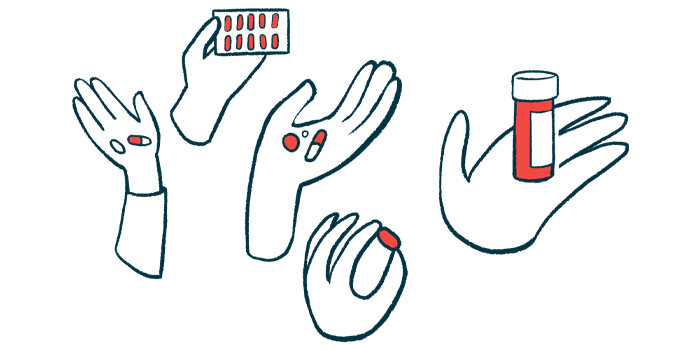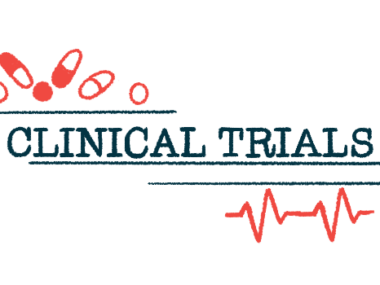UDCA plus elafibranor best for treatment-resistant PBC: Analysis
Combination lessens liver damage signs, meta-analysis shows
Written by |

Combining ursodeoxycholic acid (UDCA) with elafibranor, an experimental oral therapy for primary biliary cholangitis (PBC), may be the best treatment combination for lessening signs of liver damage in PBC patients who do not respond well to UDCA alone.
That’s according to a meta-analysis of published studies that compared the efficacy of UDCA when used in combination with different add-on therapy candidates for PBC.
Elafibranor, from Ipsen, is under regulatory review in the U.S. and Europe, with a decision from the U.S. Food and Drug Administration expected by June. While the decisions are awaited, the available data offer insights into selecting what could be the most effective second-line treatment for this group of patients.
The meta-analysis study, “Optimal drug regimens for improving ALP biochemical levels in patients with primary biliary cholangitis refractory to UDCA: a systematic review and Bayesian network meta-analysis,” was published in the journal Systematic Reviews.
PBC occurs when the immune system mistakenly attacks the bile ducts in the liver, causing them to become inflamed and damaged over time. These ducts carry bile, a fluid that helps to digest fats, from the liver, where it is produced, to the intestines.
Not all patients respond to first-line therapy
As bile ducts become damaged, bile accumulates to toxic levels in the liver, causing further organ damage and scarring, and bile acids leak into the bloodstream, causing symptoms such as itchy skin.
The first-line PBC therapy is UDCA, a naturally occurring, non-toxic bile acid also known as ursodiol. Sold as Urso and Actigall, with generics available, UCDA can help bile move out of the liver and delay liver damage and scarring, particularly if started in the early stages of the disease.
“However, approximately 30–40% of UDCA-treated patients do not have an adequate clinical response, and such patients have significantly lower transplant-free survival rates as compared to responsive patients,” the researchers wrote.
Obeticholic acid, sold as Ocaliva in the U.S. and with generics also available elsewhere, is approved for use in combination with UDCA in patients who do not respond to UDCA alone, and on its own in those unable to tolerate UDCA.
Other medications, with distinct mechanisms of action, are being developed as add-ons to UDCA to treat PBC.
Analysis looked at ALP levels in studies
Three researchers in China systematically analyzed all published studies up to December 2023 comparing the efficacy of different UDCA-based combination treatments against UDCA alone in PBC patients with poor response to UDCA.
As an efficacy outcome, the team looked specifically at changes in blood levels of a liver enzyme called alkaline phosphatase (ALP). This is considered one of the “two most important parameters for assessing treatment response,” the researchers wrote, with high ALP levels being indicative of liver damage.
They reviewed 23 studies, covering 1,734 patients.
Seven studies compared UDCA plus bezafibrate versus UDCA alone, and six studies compared UDCA plus fenofibrate versus UDCA alone. One study compared UDCA plus bezafibrate versus UDCA plus fenofibrate.
Both bezafibrate and fenofibrate are fibrates, a type of medication that lowers fatty molecules in the blood. These exert their effects by activating PPARs, proteins that regulate gene activity related to processes that contribute to liver damage in PBC, including inflammation and scarring. Activating PPARs is expected to reduce the levels of bile, thereby reducing the damage that occurs in PBC.
Three studies compared UDCA plus obeticholic acid versus UDCA alone, two studies compared UDCA plus elafibranor with UDCA, and one study compared UDCA plus seladelpar versus UDCA alone. Elafibranor, saroglitazar, and seladelpar are PPAR agonists, meaning they work by selectively and directly activating PPARs.
One study each compared the use of UDCA together with either the corticosteroid budesonide or aldafermin, a molecule that suppresses bile acid production, versus UDCA alone.
Results showed that when used in combination with UDCA, all medications, except for budesonide and aldafermin, were significantly more effective than UDCA alone at lowering blood ALP levels.
Further statistical analyses of the likelihood of each intervention being the best treatment option for reducing ALP levels demonstrated that UDCA plus elafibranor (at a dose of 80 mg) was the most promising, with a 32% cumulative probability of being the most effective combination.
This was followed closely by UDCA in combination with saroglitazar, at a dose of 4 mg.
When data from six studies that were not appropriately controlled trials were excluded from the meta-analysis, “saroglitazar in combination with UDCA was the most likely (24%) to be the optimal drug regimen for improving ALP biochemical levels, followed by elafibranor in combination with UDAC (23%),” the team wrote. “As second‐line therapy for [UDCA-resistant] PBC, PPAR agonists were more effective than any other drugs with other mechanisms in improving ALP biochemical levels, with elafibranor being the best,” they wrote.
Data from Phase 3 trials testing either elafibranor or seladelpar have shown high treatment response rates in PBC patients. Results from late-stage trials of saroglitazar and aldafermin are pending.
“The results of our network meta-analysis need to be further validated by large scale, high-quality phase [3] studies in the future,” the researchers wrote.






